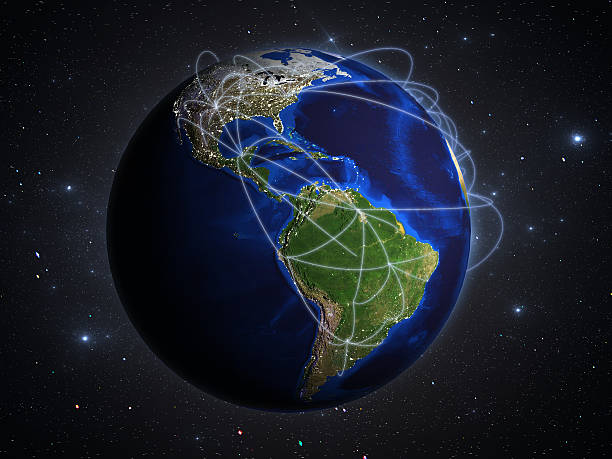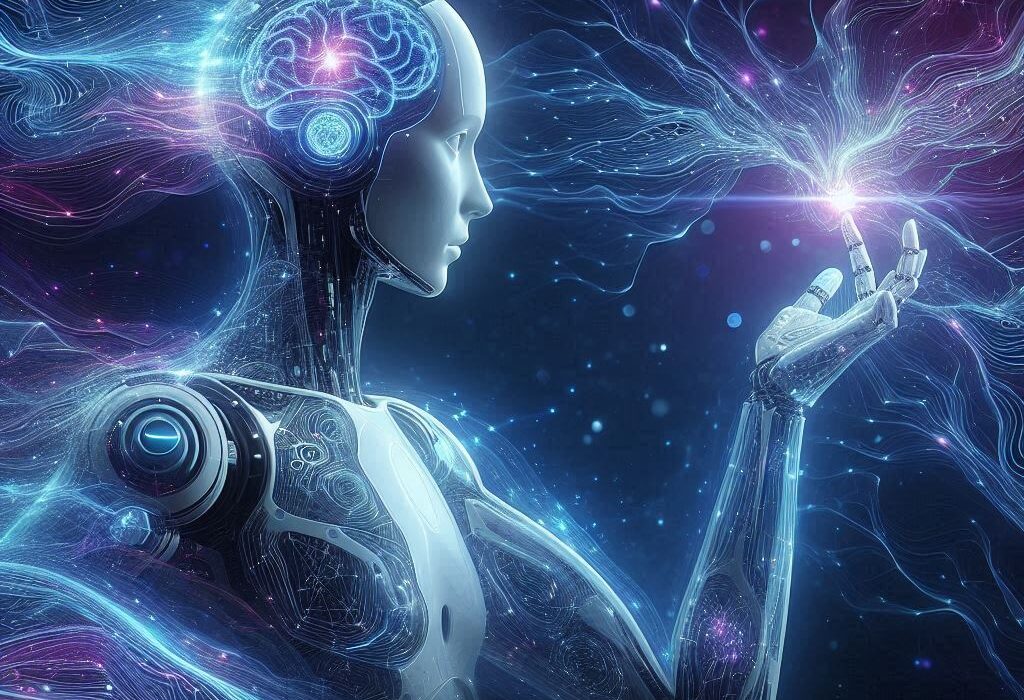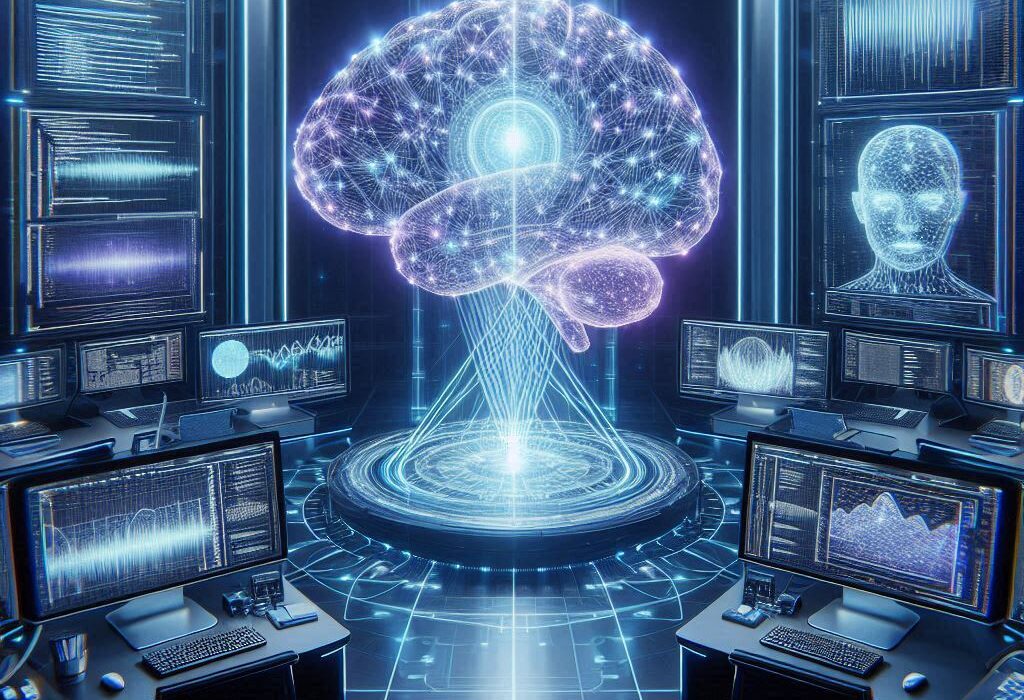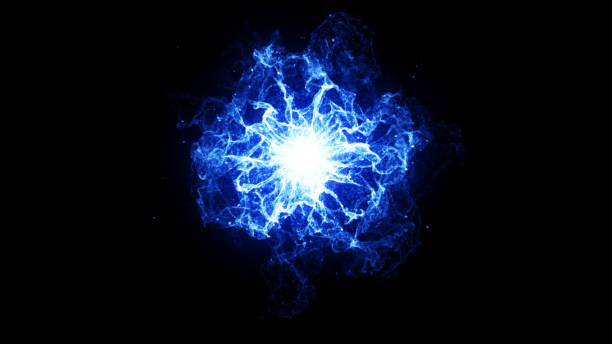The internet is the nervous system of the modern world. It connects billions of people, powers global economies, and fuels the ongoing transformation of human civilization. From its origins as a military communication experiment to its current role as the foundation of modern society, the internet has continually evolved through waves of technological innovation. Yet, what lies ahead promises to be more revolutionary than any previous stage. The convergence of advanced software, artificial intelligence (AI), and quantum technologies is setting the stage for the next evolution of the internet—one that will fundamentally alter communication, computation, and human interaction. This future is often referred to as the “Quantum Web,” a global network built on quantum mechanics, intelligent algorithms, and decentralized architectures. Understanding this transformation requires an exploration of where the internet has come from, how AI and software are reshaping it today, and where quantum science will take it tomorrow.
The Evolution of the Internet
The internet began in the 1960s as ARPANET, a U.S. Defense Department project designed to create a communication network that could survive nuclear attacks. Using packet-switching, the system allowed data to be divided into smaller units, sent across multiple routes, and reassembled at the destination. This laid the groundwork for the decentralized architecture that still defines the internet today.
In the 1980s and 1990s, the internet expanded into academia and eventually into homes and businesses. The introduction of the World Wide Web by Tim Berners-Lee transformed the internet from a network of text-based data into an interconnected web of information accessible through graphical browsers. This period saw the rise of email, search engines, and the first e-commerce platforms, setting off a digital revolution.
The 2000s brought the social web, mobile computing, and cloud infrastructure. Users became both consumers and producers of information, creating vast social and informational ecosystems. Platforms like Google, Facebook, and Amazon dominated the web by leveraging data at massive scales. The concept of “Web 2.0” emerged, characterized by interactivity, user-generated content, and network effects.
Now, the internet is on the brink of its next transformation, sometimes called Web 3.0 or the intelligent web. This era integrates artificial intelligence, decentralized computation, and, in the near future, quantum communication. The evolution is moving from static content and centralized services toward autonomous systems, self-learning algorithms, and secure, quantum-enhanced networks that transcend the boundaries of classical computing.
The Role of Software in the Future Internet
Software is the language of the internet. Every protocol, application, and digital interaction depends on software to define logic and behavior. As hardware becomes faster and more interconnected, software evolves to orchestrate the complexity of global systems. The future of the internet will rely on software that is adaptive, intelligent, and self-correcting.
One of the most profound shifts in modern software development is the rise of autonomous software agents—self-operating programs capable of learning, negotiating, and coordinating across networks. Unlike traditional programs that follow static instructions, these agents use machine learning and natural language understanding to operate dynamically in real time. For instance, in decentralized networks, software agents could negotiate data-sharing agreements or manage resources autonomously without human intervention.
Modern development practices are also evolving toward abstraction and automation. Low-code and no-code platforms enable anyone to create digital services, lowering the barriers to innovation. This democratization of software development is a fundamental part of the future web, where user-generated systems and services will coexist with industrial-scale infrastructures.
In parallel, the software stack of the internet itself is becoming more modular and decentralized. Distributed ledgers, smart contracts, and peer-to-peer computation are redefining how software interacts with data. These mechanisms reduce reliance on centralized servers, improve transparency, and allow systems to function trustlessly—meaning that no single entity must be trusted for a transaction or interaction to occur.
At the heart of this shift is interoperability. Future internet software must communicate seamlessly across architectures—classical, AI-driven, and quantum. This means protocols will evolve to handle data encoded in quantum states, decisions made by neural networks, and transactions validated by decentralized consensus algorithms. The software of tomorrow will not simply run on hardware; it will collaborate with intelligent systems and quantum devices to create a unified digital ecosystem.
Artificial Intelligence as the Engine of the Intelligent Web
Artificial intelligence is already the most transformative force in computing today, and its integration into the internet will mark the beginning of a new era—the intelligent web. Unlike the static or socially driven webs of previous generations, this version of the internet will be cognitive. Every layer of interaction, from data routing to user experience, will be shaped by intelligent systems that learn, adapt, and predict.
AI’s integration into the web is occurring on multiple levels. At the infrastructure level, AI algorithms optimize traffic flow, manage data centers, and detect network anomalies in real time. This enables the internet to self-heal and adapt dynamically to demand and security challenges. At the application level, AI personalizes content, enhances search results, and enables conversational interfaces that can reason about user intent.
The true power of AI, however, lies in its potential to act as a universal translator between humans and machines. Natural language models enable people to interact with complex systems through plain speech, while multimodal AI systems integrate text, images, video, and sensor data into unified representations of meaning. This convergence allows the internet to evolve from a passive information repository into an active participant in human activity—an assistant, collaborator, and even a creative partner.
The intelligent web will rely heavily on decentralized AI. Rather than storing and processing all data on centralized servers, computation will occur closer to the user, leveraging edge AI and federated learning. These technologies enable models to learn across distributed networks without centralizing sensitive data, enhancing privacy while improving global performance. In such a model, your smartphone, autonomous vehicle, or wearable device could participate in collective AI training without exposing private information to external entities.
The next evolution of AI on the web will involve self-organizing digital ecosystems. AI agents, representing individuals, organizations, or even other AI systems, will form cooperative and competitive relationships. They will negotiate contracts, allocate resources, and create emergent economies within the digital sphere. This could give rise to the “machine economy,” where AI entities transact autonomously using cryptocurrencies or digital tokens, optimizing entire industries such as logistics, energy, and finance.
The Merging of Software and AI
The distinction between software and AI is beginning to blur. Traditional software executes deterministic rules, while AI models infer patterns from data. The future of the internet lies in merging these paradigms to create adaptive software systems capable of reasoning and evolution. This fusion is sometimes referred to as “software 3.0,” where programs no longer rely solely on code but incorporate learned representations and dynamic feedback mechanisms.
Imagine a future web application that not only serves data but evolves its functionality in response to user behavior. A content management system could autonomously reorganize itself to match audience engagement patterns, or an enterprise software suite could optimize internal workflows based on employee interactions. This is software that writes itself—guided by AI yet governed by human intent.
In the development pipeline, AI will automate code generation, testing, debugging, and optimization. This will drastically accelerate innovation cycles, reducing the time between concept and deployment. GitHub’s Copilot and similar tools are early examples of this transformation, but the coming generation of AI-driven software engineering will operate at higher abstraction levels, designing entire system architectures autonomously.
The combination of AI and software will also enable self-regulating digital ecosystems. Instead of requiring manual updates, systems will continuously monitor their own performance, detect vulnerabilities, and deploy patches autonomously. This approach will drastically improve cybersecurity and system reliability, making the internet more resilient to attack and failure.
The Quantum Revolution
While AI and advanced software define the current wave of innovation, quantum technology represents the next frontier. Quantum computing and quantum communication are poised to fundamentally change how the internet operates by leveraging the principles of quantum mechanics—superposition, entanglement, and interference—to process and transmit information in ways that classical systems cannot.
Quantum computing operates using qubits, which can exist in multiple states simultaneously, unlike classical bits that represent 0 or 1. This allows quantum computers to perform certain types of calculations exponentially faster than classical systems. For the internet, this means the ability to process complex optimization, cryptography, and simulation problems that are currently infeasible.
Quantum communication, meanwhile, offers unbreakable security through quantum key distribution (QKD). In QKD, encryption keys are transmitted using quantum states of light, and any attempt to intercept the signal alters the quantum state, revealing the intrusion instantly. This principle forms the foundation of the future Quantum Internet—a global network where information is transmitted securely using quantum entanglement and teleportation.
The Quantum Web will not replace the classical internet overnight. Instead, it will form a parallel layer, interconnected through hybrid protocols that allow classical and quantum data to coexist. Over time, this hybrid infrastructure will give rise to quantum-enhanced cloud computing, secure data exchange, and new forms of distributed intelligence.
Building the Quantum Internet
The construction of a global Quantum Internet is one of the most ambitious technological challenges of the 21st century. Unlike the classical internet, which relies on electromagnetic signals traveling through copper or fiber-optic cables, the Quantum Internet will transmit quantum states—entangled photons—across vast distances. Maintaining these fragile states requires highly controlled environments and precise synchronization.
Researchers around the world are already building the foundations of this network. Quantum repeaters, which extend the range of entanglement, are being developed to overcome distance limitations. Satellite-based quantum links, such as those demonstrated by China’s Micius satellite, have proven that quantum communication is possible over thousands of kilometers.
The architecture of the Quantum Internet will likely consist of interconnected quantum nodes—computers, sensors, and communication devices capable of processing and exchanging quantum information. Each node will store qubits in quantum memories and use teleportation protocols to transfer entangled states across the network. Quantum routers and switches will manage traffic between nodes, creating a fully quantum communication fabric.
This infrastructure will enable applications that are currently beyond imagination. Secure voting systems, unforgeable digital identities, and real-time simulation of complex quantum systems could all become possible. The Quantum Internet will also serve as the backbone for distributed quantum computing, allowing multiple quantum processors to collaborate on large-scale problems through entanglement-based communication.
AI Meets Quantum: The Quantum-Intelligent Web
The fusion of AI and quantum computing will mark the birth of a new paradigm—the Quantum-Intelligent Web. In this era, AI models will not merely operate on classical data but leverage quantum algorithms to enhance their learning and reasoning capabilities. Quantum machine learning (QML) combines the probabilistic nature of quantum mechanics with the inferential power of AI, potentially leading to exponential improvements in speed and efficiency.
Quantum algorithms such as the quantum Fourier transform and Grover’s search algorithm demonstrate how quantum computing can outperform classical systems in specific tasks. In the context of AI, quantum computing could accelerate training for large models, optimize neural network architectures, and improve pattern recognition in high-dimensional data spaces. This will enable breakthroughs in natural language understanding, drug discovery, climate modeling, and cybersecurity.
The Quantum-Intelligent Web will also reshape data privacy and ownership. By combining quantum encryption with decentralized AI, users could retain control over their data while benefiting from global intelligence networks. Instead of sending data to centralized servers, encrypted quantum data could be processed locally within entangled systems, ensuring privacy and transparency simultaneously.
Moreover, the integration of quantum communication will enable AI systems to collaborate at unprecedented speeds. Distributed quantum networks will allow instant synchronization of learning models, creating global AI ecosystems that evolve collectively. This will lead to emergent intelligence that transcends the capabilities of any single model or machine.
Decentralization and the Web of Trust
A defining feature of the future internet will be decentralization. The current internet is dominated by centralized platforms that control data, identity, and access. Decentralized architectures aim to reverse this paradigm by distributing control among users and nodes across the network.
Blockchain technology introduced the foundation for decentralized trust through consensus mechanisms that verify transactions without central authorities. The next generation of decentralized web—often referred to as Web 3.0—extends this idea beyond currency to encompass identity, storage, computation, and governance. Users will own their data and digital assets, interacting directly through peer-to-peer protocols.
When combined with AI and quantum technologies, decentralization will create a self-regulating web ecosystem. Smart contracts powered by AI can autonomously enforce agreements, while quantum security ensures the authenticity of transactions. This convergence will eliminate intermediaries, reduce fraud, and enable new forms of cooperation at a global scale.
In this new web, identity will be decentralized and verifiable through cryptographic signatures rather than corporate accounts. Users will maintain sovereign digital identities, controlling what information they share and with whom. The Web of Trust will evolve into a quantum-secure, AI-managed framework where trust is mathematically guaranteed and dynamically adaptive.
The Economics of the Quantum and AI Internet
The economic structure of the future internet will be shaped by data, computation, and algorithmic intelligence. Data will remain the most valuable resource, but ownership and value extraction will change dramatically. In decentralized AI ecosystems, users will be compensated for contributing data that improves models. Machine-to-machine economies will emerge, where AI agents transact services, compute cycles, and digital assets autonomously.
Quantum computing will introduce new industries around secure communication, optimization-as-a-service, and quantum simulation. Entire sectors—finance, logistics, healthcare, and energy—will rely on quantum-enhanced solutions to solve complex problems more efficiently than ever before. As a result, the global digital economy will shift from centralized platforms toward distributed, algorithmic marketplaces.
Cryptocurrencies and decentralized tokens will continue to serve as the backbone of this machine economy, but they will evolve into quantum-resistant forms. Post-quantum cryptography will ensure that digital assets remain secure even in a world where quantum computers can break classical encryption. Smart contracts will handle quantum-based transactions, facilitating secure interactions between classical and quantum systems.
Ethical and Societal Implications
The future of the internet is not just a technical transformation—it is a societal and ethical revolution. As AI becomes more integrated into daily life, questions of autonomy, privacy, and accountability will intensify. The same technologies that empower individuals can also amplify inequality or surveillance if misused.
AI systems that shape the flow of information must be transparent and fair. Algorithmic bias, misinformation, and manipulation are already challenges in the current web; in an intelligent and quantum-connected world, these risks will be magnified. Ensuring that AI operates ethically will require new governance frameworks, combining technical standards with societal oversight.
Quantum communication introduces new ethical questions around access and control. Who will build and own the Quantum Internet? How will nations regulate cross-border entanglement and data teleportation? These are not only engineering challenges but also geopolitical ones, as control over quantum infrastructure could determine future global power dynamics.
Education and inclusivity will be central to ensuring that the next evolution of the internet benefits all of humanity. The knowledge divide must not become a quantum divide. Policies that promote open access to AI and quantum technologies will be essential to prevent the creation of digital elites and to maintain the egalitarian spirit of the early internet.
The Road Ahead: A Unified Digital Consciousness
The convergence of software, AI, and quantum communication points toward an extraordinary possibility—a unified digital consciousness distributed across the network. This does not imply a sentient machine in the science-fiction sense, but rather a globally interconnected system capable of adaptive, collective intelligence.
In such a system, the boundaries between devices, users, and data will blur. Every connected element—from a quantum sensor to an AI assistant—will participate in a shared computational fabric. Knowledge will flow seamlessly across scales, enabling instantaneous collaboration between humans and machines. The internet will cease to be merely a tool; it will become a living infrastructure for collective cognition.
This vision represents both opportunity and responsibility. The same technologies that can solve global crises—such as climate change, disease, and poverty—can also destabilize societies if deployed recklessly. The future of the internet, therefore, must be guided by ethical design, transparency, and inclusivity. Humanity must ensure that as intelligence pervades the network, it remains aligned with human values and aspirations.
Conclusion
The future of the internet will not be defined by a single invention or paradigm shift but by the convergence of multiple revolutions. Advanced software will provide adaptability and interoperability. Artificial intelligence will bring cognition, personalization, and autonomy. Quantum technology will introduce security, parallelism, and an entirely new physics of communication. Together, they will create a web that is not merely faster or smarter but fundamentally different—a network that learns, reasons, and evolves.
The Quantum Web will mark the dawn of a new digital civilization, where communication transcends the classical boundaries of speed and distance, and where intelligence is embedded into the very fabric of the network. This future is already emerging in research labs, data centers, and open-source communities around the world.
As we move toward this next epoch, the choices made today—in software design, AI ethics, and quantum infrastructure—will shape the destiny of the internet for generations. The fusion of human creativity with machine intelligence will define not only the architecture of technology but also the evolution of knowledge itself. The internet began as a web of information; it will become a web of intelligence. And ultimately, it may evolve into the connective tissue of a planetary mind—an expression of humanity’s collective pursuit of understanding in the quantum age.






